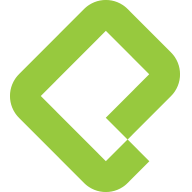Products
Get all products
You can access the list of 200 products by using the products query.
Query:
query {
products {
id
title
price
description
images
category {
id
name
image
}
}
}Response:
[
{
"id": 4,
"title": "Handmade Fresh Table",
"price": 687,
"description": "Andy shoes are designed to keeping in...",
"category": {
"id": 5,
"name": "Others",
"image": "https://placeimg.com/640/480/any?r=0.591926261873231"
},
"images": [
"https://placeimg.com/640/480/any?r=0.9178516507833767",
"https://placeimg.com/640/480/any?r=0.9300320592588625",
"https://placeimg.com/640/480/any?r=0.8807778235430017"
]
}
// ...
]Get a single product
You can get a single product by adding the id as a parameter using product query.
Query:
{
product(id: "4") {
title
price
}
}Response:
{
"data": {
"product": {
"id": "1",
"title": "Fantastic Rubber Towels",
"price": 800,
"images": [
"https://api.lorem.space/image/furniture?w=640&h=480&r=5902",
"https://api.lorem.space/image/furniture?w=640&h=480&r=164",
"https://api.lorem.space/image/furniture?w=640&h=480&r=8528"
],
"description": "The Football Is Good For Training And Recreational Purposes"
}
}
}You can use aliases to get different products in the same request, for example:
Query:
{
ProductA: product(id: "1") {
title
price
}
ProductB: product(id: "2") {
title
price
}
}Response:
{
"data": {
"ProductA": {
"title": "Fantastic Rubber Towels",
"price": 800
},
"ProductB": {
"title": "Rustic Plastic Soap",
"price": 682
}
}
}Create a product
You can create a new product by sending an object like a parameter to the addProduct mutation.
Mutation:
mutation {
addProduct(
data: {
title: "New Product"
price: 10
description: "A description"
categoryId: 1
images: ["https://placeimg.com/640/480/any"]
}
) {
title
price
images
category {
id
name
image
}
}
}Response:
{
"title": "New Product",
"price": 10,
"description": "A description",
"images": ["https://placeimg.com/640/480/any"],
"category": {
"id": 1,
"name": "Clothes",
"image": "https://api.lorem.space/image/fashion?w=640&h=480&r=4278"
},
"id": 210
}Note that the
categoryIdshould be an ID that exists incategoriesand the images are an array with URLs.
Update a product
You can update a product by sending an object like the following and adding the id as a parameter to the updateProduct mutation.
Mutation:
mutation {
updateProduct(id: "1", changes: { title: "udpate" }) {
title
price
images
}
}Response:
{
"data": {
"updateProduct": {
"title": "udpate",
"price": 800,
"images": [
"https://api.lorem.space/image/furniture?w=640&h=480&r=5902",
"https://api.lorem.space/image/furniture?w=640&h=480&r=164",
"https://api.lorem.space/image/furniture?w=640&h=480&r=8528"
]
}
}
}Note that it is not necessary to send all product attributes, just send the ones you want to update.
Delete a product
You can delete a product by adding the id as a parameter to the deleteProduct mutation.
Mutation:
mutation {
deleteProduct(id: 1)
}Response:
{
"data": {
"deleteProduct": true
}
}Pagination
APIs that use offset-based paging use the offset and limit query parameters to paginate through items in a collection.
Offset-based pagination is often used where the list of items is of a fixed and predetermined length.
To fetch the first page of entries in a collection, the API needs to be called with the offset set to 0 and the limit the products that you want in the response.
Query:
query {
products(limit: 2, offset: 0) {
title
price
}
}Response:
{
"data": {
"products": [
{
"title": "udpate",
"price": 800
},
{
"title": "Rustic Plastic Soap",
"price": 682
}
]
}
}To fetch the next page of entries, the API needs to be called with an offset parameter that equals the sum of the previous offset value and limit returned to the previous result,
To get the next page of entries, use an offset parameter equal to the sum of the previous offset value and the limit returned to the previous result, previous_offset + previous_limit.
Note that the offset should be increased by the previous limit and not by the size of the entries in the response array, as this may be less than the limit. Generally, we advise using the value of the limit in the response object to increase the offset value.
For example, for a pagination with 10 items per page, it looks like this:
| Query | Description |
|---|---|
| products(limit: 10, offset: 0) | Return the first 10 products. |
| products(limit: 10, offset: 10) | Return products from 10 to 20 |
| products(limit: 10, offset: 20) | Return products from 20 to 30 |
Or for a pagination with 20 items per page, it looks like this:
| Query | Description |
|---|---|
| products(limit: 20, offset: 0) | Return the first 20 products. |
| products(limit: 20, offset: 20) | Return products from 20 to 40 |
| products(limit: 20, offset: 40) | Return products from 40 to 60 |
Schema Product
| Attribute | Type | Description |
|---|---|---|
| id | number | The id of the product. |
| title | string | The name of the product. |
| price | number | Price the product. |
| description | string | Description the product. |
| category | number | Object of category. |
| images | string[] | List of images like URLs. |
